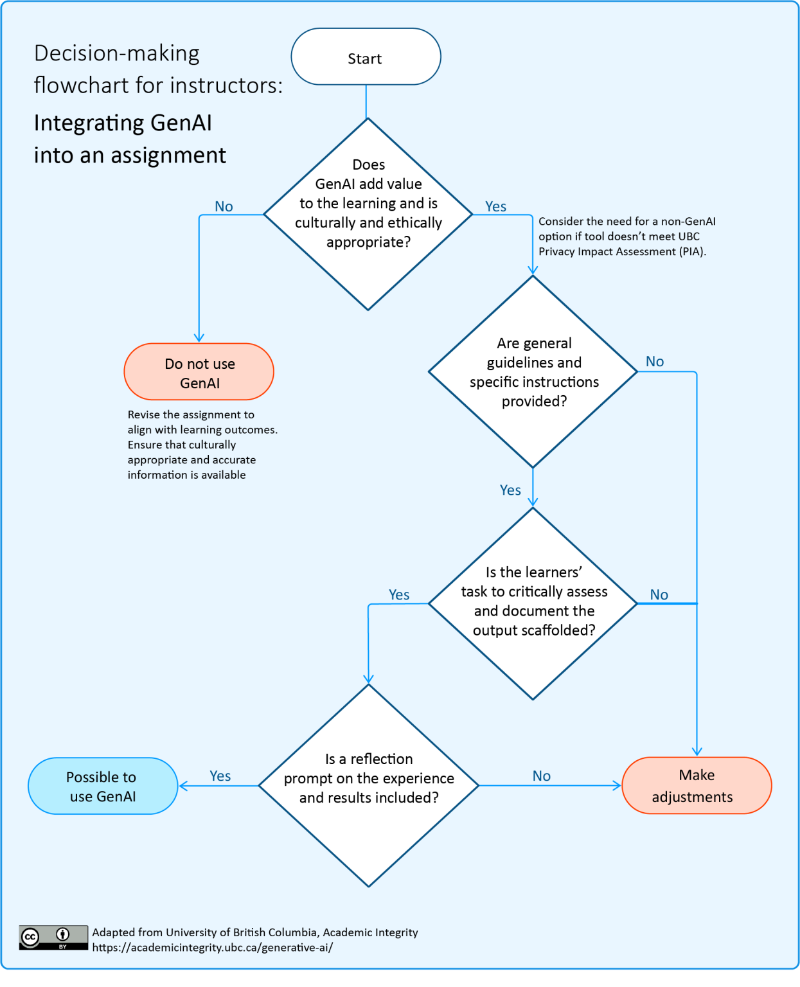Assessments and Academic Integrity
GenAI’s emergence has been raising important questions about learning:
- How can we ensure students are aware of AI permissions for a course, and know how to uphold academic integrity?
- How can we help students reflect on GenAI’s impact on their learning?
- Are current assessments valid and reliable?
- How can we make assessments more valuable and engaging to students?
- How can we mitigate or integrate AI use in assessment?
With respect to academic integrity, we want to support students in understanding how to upload academic integrity around AI. AI use isn’t automatically academic misconduct; it depends on how they are using the tool, when they are using the tool, and the course permissions. Students might not know AI is embedded in tools like Grammarly or web browsers, or how these tools can be harmful (e.g. deepfakes). They also may be unclear on how AI permission varies between courses. Building AI literacy will support their ability to uphold academic integrity.
AI literacy is crucial for the future. Ideally, assessments should provide students with opportunities to engage with AI productively and responsibly (Liu, Bridgeman, 2023). University of Sydney suggests a “two-lane” approach:
Lane 1 assessments: Supervised assessments to ensure students have mastered the skills and knowledge of the course or program learning outcomes. Examples include in-class, skills-based, live simulation-based, oral, or other interactive assessments, along with supervised on-campus exams and tests.
Lane 2 assessments: Human-AI collaboration is permitted and/or encouraged (as it algins with learning outcomes) in “assessment for/as learning”. Examples include:
- Using AI to ideate, summarize, outline
- Critically analyzing AI-generated content against their own research
- Using AI to evaluate, debate, refine
- Developing prompting skills
Pairing Lane 1 and Lane 2 approaches can also be effective, like combining a written assignment with an oral interview.
| Lane 1 Assessments (Mitigate) | Lane 2 Assessments (Integrate) |
|
|
Key reminders: Use of AI detectors is strongly discouraged as these tools have not undergone a Privacy Impact Assessment and have proven accuracy and reliability issues. No take-home assignment is AI-proof. If there are concerns about assessment validity, reach out to iasupport@vcc.ca to discuss how you might redesign or adapt the assessment.
Use this helpful flowchart from UBCO to decide about integrating GenAI into an assignment:
Further reading/viewing:
- Watch CTLR’s workshop on Redesigning Assessments for AI with AI
- University of Massachusetts Amherst (re)designing assessments in an AI world
- Digital Education Council on The Next Era of Assessment
- Phillip Dawson's video Assessment design for a time of artificial intelligence | Phillip Dawson | AMICAL 2025 - YouTube
Other pages in this section:

